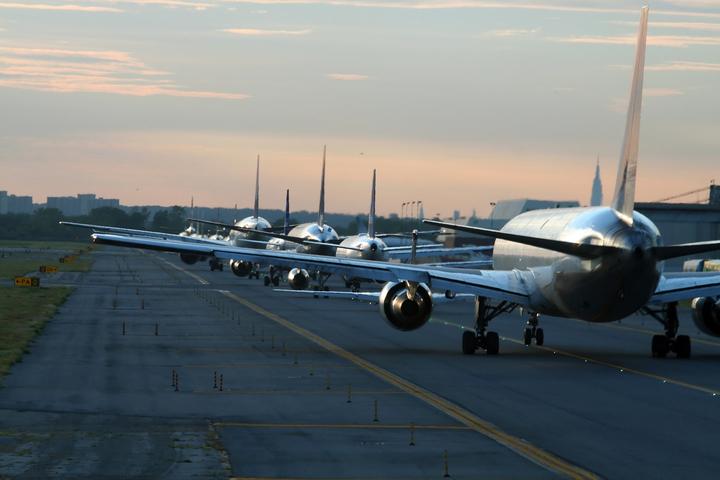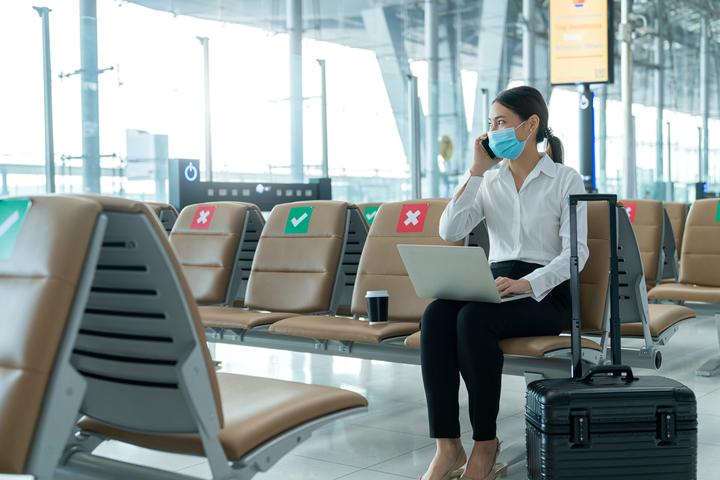Airbus vs Boeing: How the Rivalry is Changing Air Travel

Setting the scene
The global commercial aircraft market is dominated by two manufacturers: European conglomerate Airbus and Seattle-based aerospace giant Boeing. The competition began when Airbus was founded to consolidate the fragmented European aerospace sector in 1969. Both have been slowly growing their market share ever since, eventually leaving the two as the only major commercial aircraft manufacturers.
As the worldwide travel market expanded from just over 400,000 travelers in 1973 to 5.56 billion in 2019, Airbus and Boeing fought to gain market share in the booming industry, competing at every level over who would get the largest slice of the rapidly-growing pie.
Today, both companies are using every advantage they can find to drive innovation and efficiency.
737 Max groundings: the fall of Boeing
For years, Boeing was widely regarded as the top player in the aviation game, thanks in large part to the success of the 737, its smallest and most popular jetliner. Despite stiff competition from the Airbus A320 family, the Boeing 737 remains the most delivered aircraft to date. However, that success was overshadowed by a recent series of tragic events.
The first of two crashes involving the Boeing 737 MAX 8 occurred off the coast of Indonesia in October 2018, resulting in 189 fatalities. This raised serious questions about the safety of the aircraft, particularly the new Maneuvering Characteristics Augmentation System (MCAS), designed to prevent the plane from stalling by automatically adjusting its angle. Investigators found that the system had malfunctioned, causing the plane to nosedive into the Java Sea. Then, just five months later, a second crash occurred in Ethiopia, resulting in 157 fatalities. Once again, the MCAS system was suspected of malfunctioning.
In response, aviation authorities around the world grounded the Boeing 737 MAX passenger airline between March 2019 and December 2020, and Boeing suspended production of the jet. During this time, Airbus displaced Boeing as the largest aerospace company by revenue, earning $78.9 billion in 2019 as compared to Boeing's $76 billion. But that’s not the only way the aviation industry has changed…
The FAA leaves no stone unturned
In response to the 737 crashes, the U.S. Federal Aviation Administration (FAA) has taken steps to conduct broader safety assessments of new jetliners. As part of this effort, the FAA has proposed regulatory changes that would require more comprehensive and consistent reviews of aircraft technology and how their various systems might interact with each other in flight.
These regulations address requirements imposed by U.S. Congress as well as recommendations issued by the National Transportation Safety Board. By doing so, the FAA hopes to restore public trust in the aviation industry and prevent future tragedies.

COVID-19 incoming!
The COVID-19 pandemic had a significant impact on both Boeing and Airbus – as well as the aviation industry as a whole. Both manufacturers felt the hit, resulting in layoffs of thousands of employees to cope with the impact of the pandemic on sales.
In 2020, Boeing delivered their lowest number of planes in 40 years, only 157, while Airbus delivered 566, down from 863 in the previous year.
The pandemic also caused a shift in demand toward smaller, more fuel-efficient aircraft and away from larger planes. This resulted in a greater demand for Airbus' A320 family of narrow-body planes, which led to Airbus outselling Boeing in commercial aircraft deliveries and orders for the first time in a decade. However, as air travel restrictions are lifted, and airlines resume operations, both companies have since seen a gradual recovery in demand.
2022 in review: Boeing on the comeback?
in 2022, the company delivered 480 aircraft, marking a 41% increase from the previous year. Despite the controversy, the 737 family remained dominant, accounting for 81% of deliveries. However, beginning in May 2021, Boeing faced a major challenge with the hiatus of 787 deliveries. This occurred amid concerns from the FAA regarding quality control issues on Dreamliner production, one of the fastest and most fuel-efficient commercial aircraft of its size. Deliveries eventually resumed in August, but only 31 planes were shipped out by the end of the year.
In contrast, Airbus delivered 661 aircraft, falling short of their 700 target but still representing an 8% year-on-year increase. The A320 family was the largest contributor to deliveries at 78%. However, Airbus faced its own challenges, as the company was caught up in an ongoing trial with Qatar Airways over surface degradation on the A350, which resulted in order cancelations. These challenges were compounded by the COVID-19 pandemic, the war in Ukraine, energy supply issues, inflation, and constrained labor markets.
Hydrogen on the horizon
In recent years, aviation has come under increased scrutiny for its environmental impact. In 2019 alone, the flight industry generated 900 million tons of carbon emissions, accounting for roughly 2% of total global emissions and 12% of emissions across all transportation sectors. And with world leaders tightening their stances on sustainability initiatives, both Airbus and Boeing have focused their efforts on developing more fuel-efficient, cost-effective aircraft.
In February 2022, Airbus announced its Airbus ZEROe initiative to be zero-emissions by 2023. In partnership with GE Aviation and CFM International, Airbus aims to test a direct combustion engine fueled by hydrogen. The engine uses fuel cells to convert hydrogen into electricity, which then powers a propeller. In theory, this technology could power 100-passenger aircraft with a range of 1,000 nautical miles. The new fuel cell engine is set to be mounted on the manufacturer’s A380 Superjumbo, with test flights anticipated for 2026

The future of sustainable fuel sources
Boeing followed suit with the release of their own sustainability report in June 2022. The manufacturer aims to reach net-zero carbon emissions at their facilities and encourage the use of 100% SAF (sustainable aviation fuels) in their commercial airplanes by 2030. SAFs – which can be made from non-fossil feedstocks such as grain, waste fats, oils, and greases – can reportedly reduce greenhouse gas emissions (GHG) by up to 80%.
Like Airbus, Boeing is also continuing their research and development of electric and hydrogen aerospace technology. However, whereas Airbus has focused its efforts on engines, Boeing’s attention is set on making hydrogen more convenient for use.
In partnership with the Defense Advanced Research Projects Agency (DARPA), Boeing plans to develop a new type of large, fully composite, linerless cryogenic fuel tank for hydrogen fuel storage. Although it contains more energy by weight than jet fuel and burns cleanly, hydrogen is a gas at room temperature and requires extremely low temperatures to be stored as a liquid. As such, the development of cryogenic fuel tanks is essential for making hydrogen a viable fuel source for commercial aviation. And after the rough few years, Boeing has had, this could be the much-needed breakthrough to put them back ahead of their rival.
Head-to-head in the largest aircraft order to date
In February 2023, a historic order was received by both Boeing and Airbus from Air India: the largest aircraft order ever made. The deal – which is not yet finalized – is estimated by the Wall Street Journal to be worth $85 billion and includes a total of 470 new planes split between the two manufacturers.
Boeing's share of the order includes 220 planes, with 190 of them being 737 MAX jets, 20 being 787 Dreamliners, and 10 being the delayed new 777X line.
Airbus, on the other hand, received an order of 250 planes, with 210 being A320neo family of narrow-body planes for domestic use and 40 being A350 wide-body jets for long-haul international flights.
The deal comes as a big boost for Boeing, which has faced recent struggles, and marks the company's third-largest sale ever in terms of value and second-largest of all time if ranked by the number of aircraft.
2023 and beyond: the sky’s the limit
Like Coke vs. Pepsi, Ford vs. GM, and other legendary corporate rivalries, the intense competition between Airbus and Boeing is sure to provide the aviation industry with the innovation it needs to thrive in this new, unprecedented territory – one that is evergreen and ever-growing.
As such, we can expect to see new aircraft designs, buying patterns, and fuel sources that reflect the changing needs of air travel customers around the world. It's an exciting time for the aviation industry – and Airbus and Boeing are at the forefront of it all.
